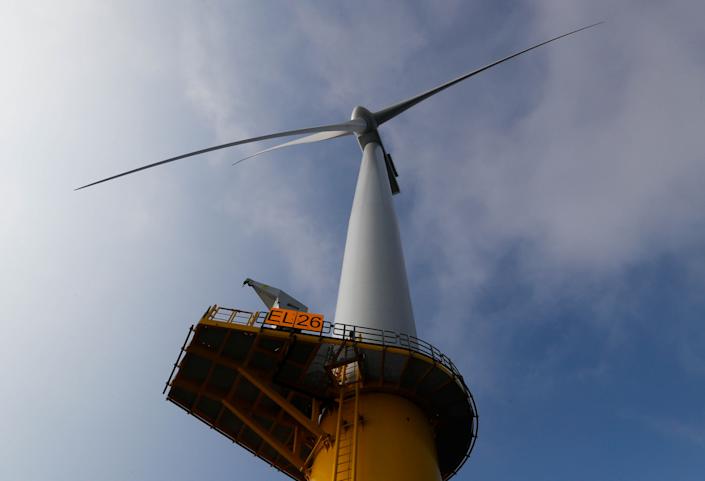Thu, February 17, 2022

Canada’s first carbon credit-based exchange traded funds (ETFs) offer an alternative to oil and gas stocks for investors who believe industrial thirst for fossil fuels will be a tough habit to break. The price of European carbon credits – a core holding of two newly launched ETFs – has outperformed popular investments like bitcoin over the past year. Analysts see the price continuing to climb as governments put more pressure on industries to go green.
Ninepoint Partners, a financial firm whose bullish energy fund manager has touted gains from Canadian oil and gas stocks, launched its carbon credit ETF (CBON) on the NEO Exchange on Wednesday. The debut follows the launch of the Horizons Carbon Credits ETF (CARB) on the Toronto Stock Exchange last week.
John Wilson, co-CEO and managing partner at Toronto-based Ninepoint, says his firm’s bullish take on fossil fuel works in concert with his expectation for a decades-long transition to cleaner energy sources spurring demand for carbon credits.
“Whether we like it or not, we’re going to be using oil and gas for the next 20 to 30 years,” he told Yahoo Finance Canada in an interview. “As much as everyone understands the need to get off carbon-based fuels, we have literally hundreds of trillions of dollars of infrastructure around this planet based on that.”
Speaking on the phone from British Columbia, where climate change has been blamed for devastating wildfires and floods, Wilson also sees a growing appetite for governments making companies pay increasingly steep prices for pollution.
“People are going to say, ‘If carbon emissions are what’s causing this weather, and that’s what’s costing us all this money, the people who are emitting carbon are going to have to pay a higher price for it,’” he said. “That’s what’s driven carbon credits higher in Europe.”
Carbon trading systems create a financial incentive for major emitters to cut back. In general, they work by placing a cap on overall emissions over a period of time, and issuing a fixed number of credits or allowances. Companies must hold enough credits to cover their emissions, or face fines and penalties. Firms that exceed the cap must acquire additional credits from a lower emitter.
The global emissions trading market could be worth as much as $22 trillion by 2050, according to an estimate last year from Wood Mackenzie.
The Ninepoint Carbon Credit ETF is equally weighted in four government-mandated carbon allowance markets. The fund holds rolling futures contracts from the European Union Allowance (EUA), the California Carbon Allowance (CCA), which includes the province of Quebec, and the Regional Greenhouse Gas Initiative (RGGI), focused on the northeast United States. The Horizons ETF exclusively holds EUA futures. The firm says it could add other markets later on.
The EU factor
Demand for EU carbon allowances has been brisk. CIBC Capital Markets analyst Jin Yan says rising natural gas prices in Europe are causing utilities to temporarily shift to coal, resulting in greater demand for offsets to account for the additional emissions.
“This is translating into incremental immediate demand for EU carbon allowances, which are now up over 130 per cent year-over-year,” Yan wrote in a Feb. 14 note to clients. “While we admit the price action today may be short-lived, as gas prices are expected to decline as we exit the winter, we do note other structural changes that should support carbon prices longer term.”
Yan points to decisions in Germany, Belgium and Spain to phase out nuclear power, the EU’s “Fit for 55” plan calling for a 55 per cent emissions cut by 2030, and potential supply disruptions to imported Russian natural gas prolonging coal use in Europe.
“All of this likely supports carbon prices between €80 to €100 per tonne in the longer term,” Yan wrote.
While carbon credit ETFs are new to Canada, a handful have launched in the United States. The US$1.6 billion KraneShares Global Carbon ETF (KRBN) has climbed more than 96 per cent in the past 12 months. The smaller iPath Series B Carbon ETN (GRN) gained more than 141 per cent over the same period.
Beyond the track record for strong returns, Wilson says adding exposure to carbon credits is an effective way to diversify an investment portfolio.
“They’re not correlated to traditional investment markets. They don’t move up and down with equity markets, and they don’t move up and down with fixed-income markets,” he said. “It’s an entirely different asset class that allows investors to play the burgeoning demand for credits.”


